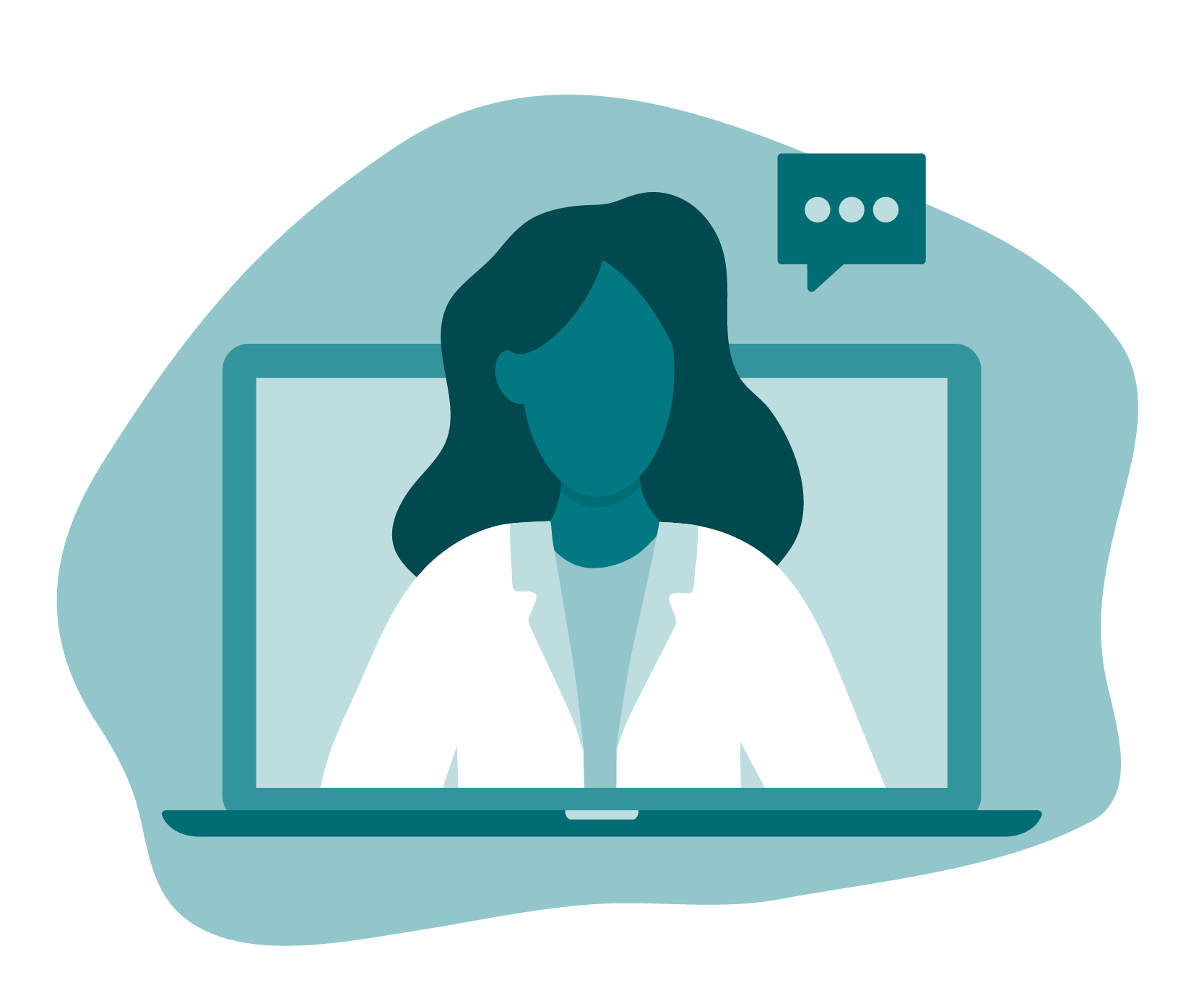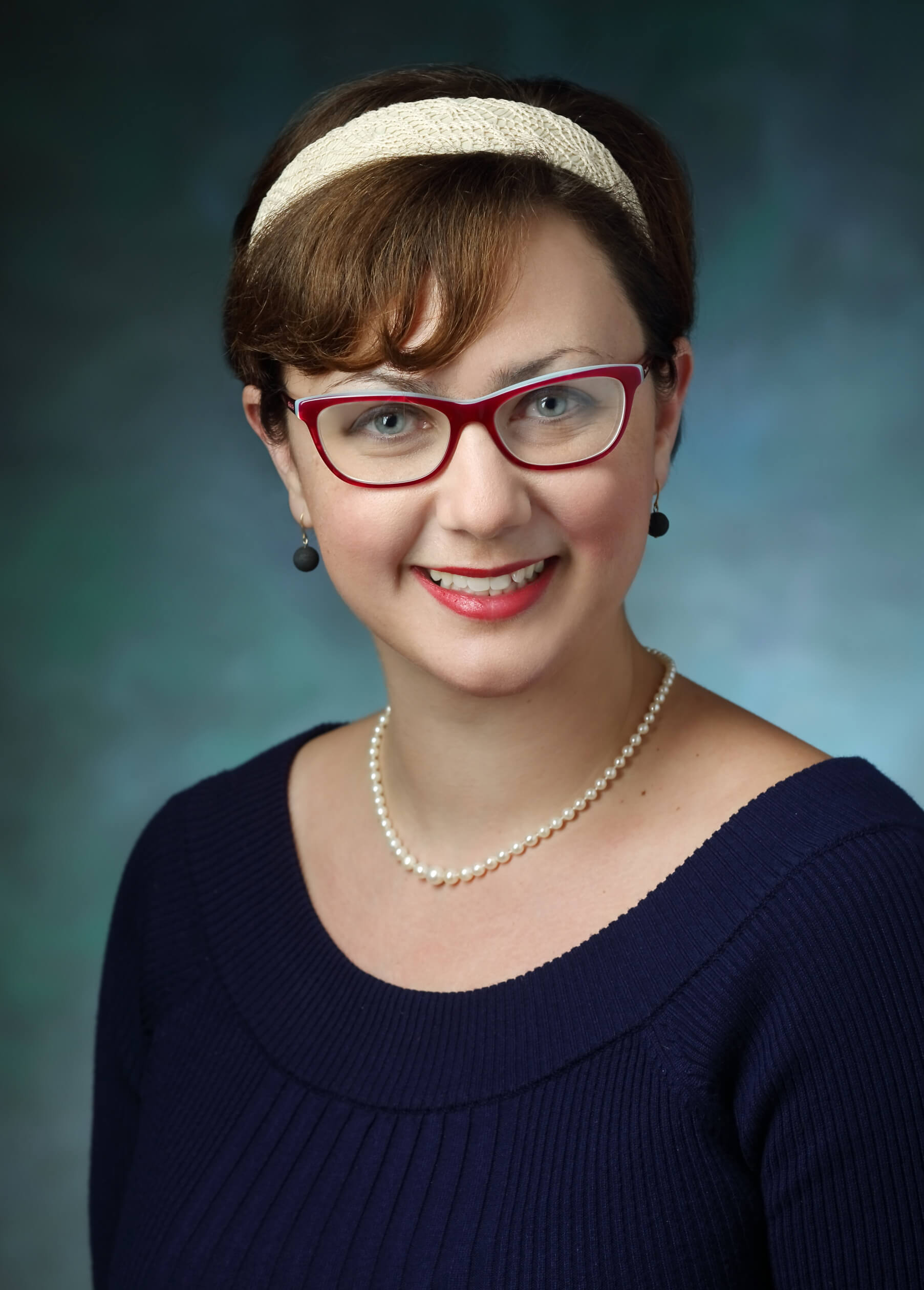FY20 Annual Report: Education Training
Virtually Everywhere: Telemedicine and the Department of Education and Training

Projects abounded for Johns Hopkins Community Physicians’ (JHCP) department of education and training (DET) in fiscal year 2020, but their work to support telemedicine was particularly impactful across JHCP and the Johns Hopkins Health System. The COVID-19 pandemic completely changed the way health care is delivered; to mitigate risk of spreading the virus, there was a rapid transition from in-person appointments to video visits, nearly overnight. JHCP practices pivoted from providing virtually no virtual care, to more than half of encounters being completed as video or phone visits by mid-March 2020. By April, more than three quarters of appointments were categorized as telehealth, and the majority of visits continued to be categorized as video visits through the end of the fiscal year in June.
A transition so drastic required support from all JHCP departments, and the DET made telemedicine support a priority. Their efforts were two-fold: on one hand, they developed, disseminated and trained staff members and providers on team-based workflows and on the other, they provided real-time support to patients and employees by creating a Video Visit Support Team (VVST).
The team-based training efforts, led by Mindy Berger, program manager for clinical informatics, were integral to the successful transition. The biggest challenge, Berger explains, was keeping up with the rapid advances in technology. “It was a new way to provide care, so it was a challenge for everyone: providers, staff members and patients,” she says.
A Deeper Dive: Developing Education for Patients and Clinicians
Judy Greengold, family nurse practitioner at JHCP’s Fulton practice, recognized a need for both patient and provider education. Partnering with the department of education and training and Johns Hopkins Office of Telemedicine, Greengold and team rapidly developed and launched innovative educational offerings. Together they created instructional videos for patients introducing video visits and explaining the process around them. They also convened a Telemedicine Education Consortium, with representation from across Johns Hopkins Medicine. This group developed a new training course titled “Clinical Skills in Telemedicine,” which focuses on techniques for physical examination via telemedicine visits. “The consortium draws on the experiences of providers from all specialties to study, cultivate and promote the highest clinical standards in telemedicine,” says Greengold. The clinician-facing curriculum includes modules for chest, abdominal, ENT, neurological and general medical examinations. Johns Hopkins clinicians can view the videos on the Office of Johns Hopkins Physicians telemedicine education page.
 Judy Greengold, C.R.N.P.
Judy Greengold, C.R.N.P.The basic workflow that Berger and her colleagues promoted involved the entire care team. Starting with scheduling, staff members ensure that the patient has a MyChart account and outline the steps for joining their future visit. Next, practice staff members reach out to patients in advance of their appointment to review the eCheck-in process. At the time of the appointment, practice staff members virtually “room” the patient to make sure all technology is working and to collect clinical data. After that, the provider joins the call to complete the visit. The DET set out to standardize this process and put the workflow in writing to make it easier for the team to follow. The two most important things, says Berger, were to “continue to focus on our patients and their relationship with our team, and to maintain the same quality of care.”
The team used a myriad of tactics to effectively train staff and providers:
- They developed a one-pager that outlined the whole team-based process, with links to multiple training videos and tip sheets.
- They created videos of the patient-view for staff members to reference while walking patients through the process.
- They provided informational webinars that were available for staff members and providers from JHCP and the Johns Hopkins University School of Medicine (SOM).
- They held training webinars for each individual JHCP practice.
Major sources of information for training materials and workflow development were the practices themselves. “A lot of it was crowdsourced, as sites began sharing their best practices,” says Berger. “Our team collected and synthesized them all, and used them to create new recommendations.” Another source of information was the VVST.
The DET dedicated a team of individuals to support patients, staff and providers in real-time using a support line. According to education project manager George Margetas, the VVST was originally created to support JHCP providers only, so that they did not have to wait in the long queues that were forming in the general Johns Hopkins Medicine IT support pool. Eventually they began collaborating with the Epic Help Desk to help manage their queues, then they opened their own support line for any patient or Johns Hopkins provider to call. The VVST soon expanded its ranks to include members from IT, the SOM and even a few JHCP practice staff members who were trained and helped tackle the massive call volumes.
Altogether, the VVST supported 2,300 requests over a period of five months — a combination of help desk tickets, calls to their hotline and emails. Their resolution rate was nearly 70 percent, with many of the unresolved issues being due to technology restraints. Lashardian Byers, operational project administrator, recounts that most of the calls involved troubleshooting telemedicine visits in real-time, as patients and providers connected to appointments. “This was a huge patient-satisfier,” Byers says. “They knew that someone was there to help them get connected to the care they need during the pandemic.” In fact, 80 percent of cases involved VVST members working directly with patients.
More than 60 percent of calls came from other Johns Hopkins Medicine member organizations, while 37 percent were isolated to JHCP. “This endeavor was spearheaded by the JHCP Education and Training department, but it was really a group effort,” Margetas says. “It’s an overall win for JHCP and for the Johns Hopkins Health System as a whole.” Adds Byers, the DET’s telemedicine efforts, both through team-based training and the VVST, were a collaboration in pursuit of supporting JHCP’s practices and Johns Hopkins Medicine departments so that — even through a pandemic — they could continue to do what they do best: deliver excellent care to our patients.
